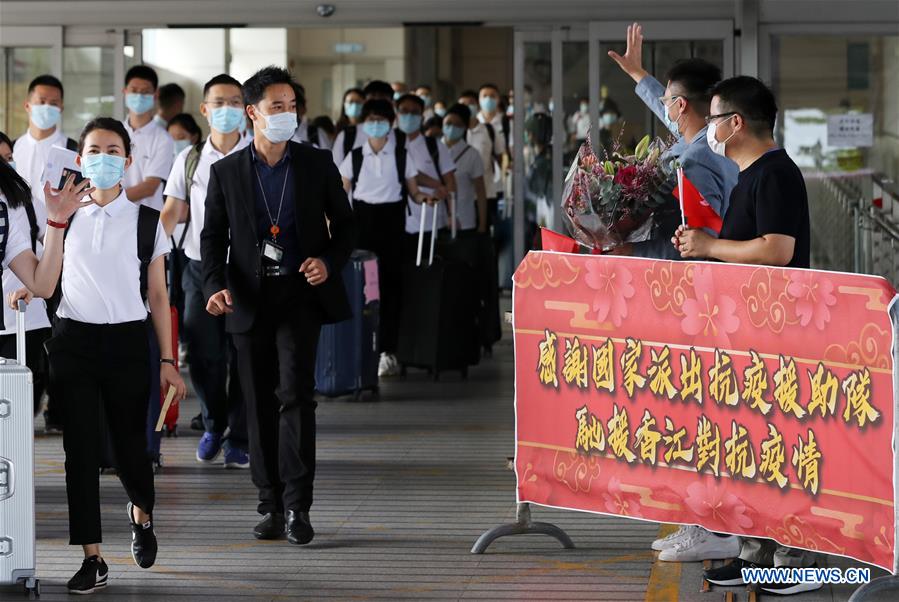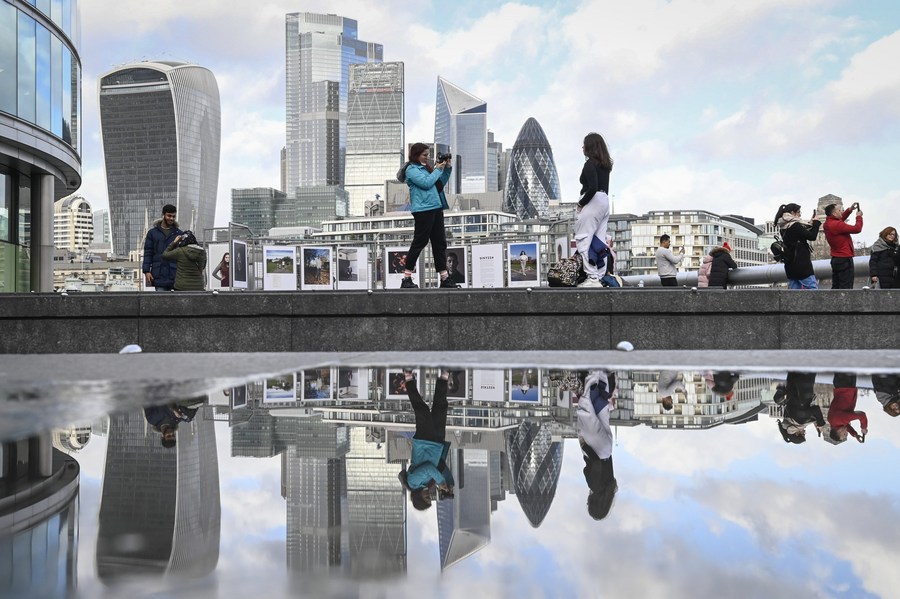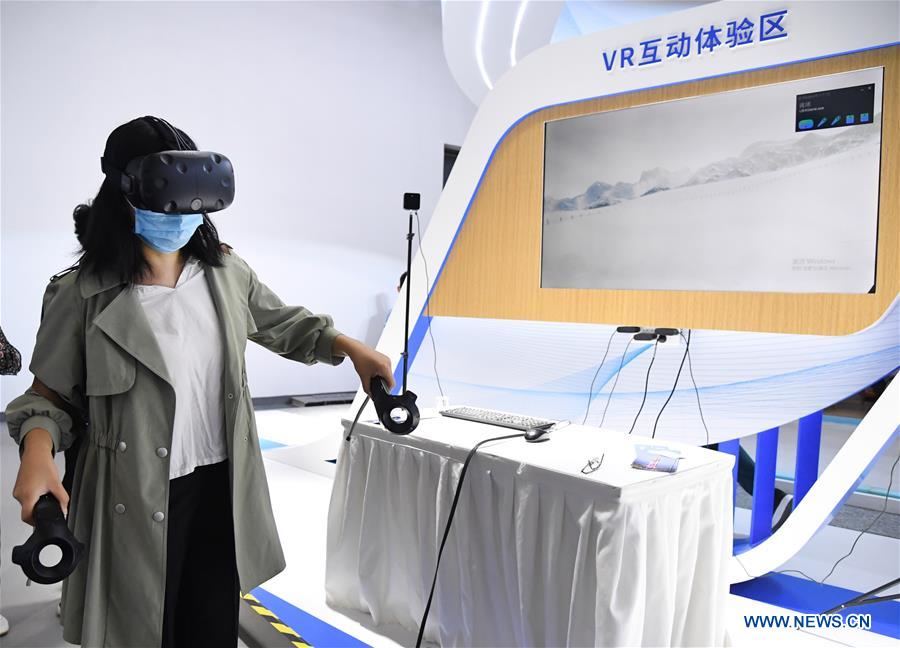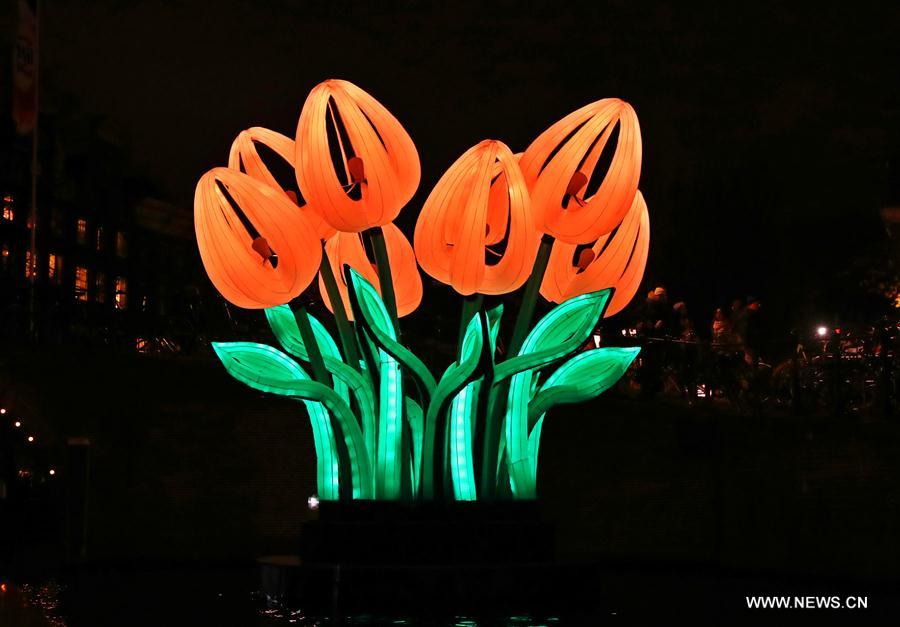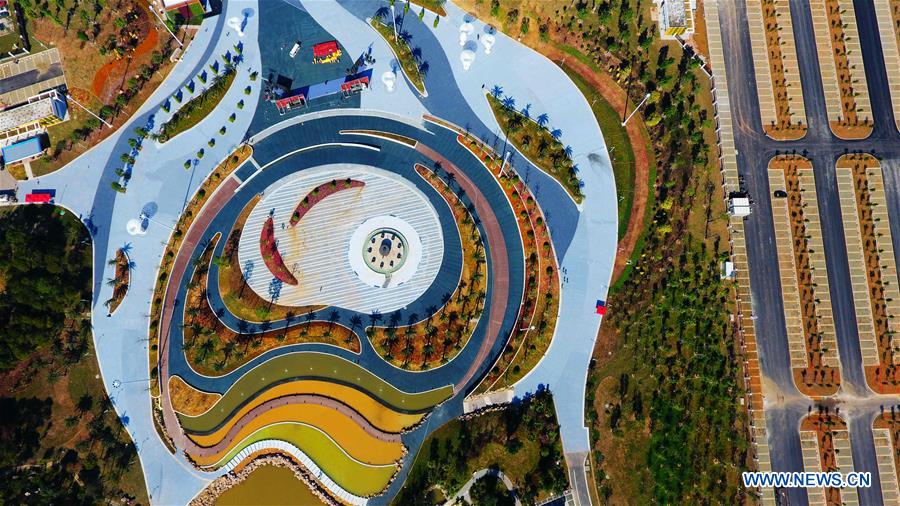
Hong Kong citizens welcome a nucleic testing support team from the Chinese mainland on their arrival in Hong Kong, south China, Aug. 21, 2020. (Xinhua/Li Gang)
HONG KONG, Sept. 6 -- Eyes bloodshot and voice hoarse, Luo Shuiguang has worked till dawn for three nights in a COVID-19 testing laboratory of Hong Kong.
"It's really hard but I had been fully prepared for this physically and mentally before coming here, and I must do my best," Luo, 30, said.
Luo, a technologist in the clinical laboratory of Huangjiang Hospital in Dongguan, Guangdong province, arrived in Hong Kong on Aug. 28 as a member of the third nucleic testing support team from the Chinese mainland.
His mission here is to help an ongoing mass program aimed at screening COVID-19 patients in Hong Kong.
The government of the Hong Kong Special Administrative Region (HKSAR) launched Tuesday the Universal Community Testing Program to find asymptomatic carriers of coronavirus and cut transmission chains.
Hong Kong residents aged no less than six can get tested for free and voluntarily.
A total of 141 swab collection stations are operating across Hong Kong and specimens are sent to the "Fire Eye Laboratory" at Sun Yat Sen Memorial Park Sports Center where Luo works. The lab was built by mainland testing service provider BGI to boost Hong Kong's testing capacity.
Luo is responsible for extracting the nasal and throat swab samples taken by front-line medical staff. "As we have direct contact with the samples ... we are at great risk of getting infected."
Hong Kong has witnessed a new round of the COVID-19 outbreak since early July, which overstretched hospitals and testing institutions. At the request of the HKSAR government, the central government swiftly set up support teams to assist the anti-epidemic battle in Hong Kong.
After the first seven testing professionals came to Hong Kong on Aug. 2, many more arrived successively. By Friday, there had been more than 420 mainland medical staff working in Hong Kong.
Gong Wenbo, a member of the support teams, is in charge of a 100-strong testing section that can handle 100,000 samples a day. Back in Shenzhen, he is the deputy testing director of Shenzhen People's Hospital.
As one of the front-line medical staff, Gong has worked multiple hospitals in Shenzhen and Beijing since the COVID-19 outbreak and has accumulated a wealth of experience in fighting the coronavirus.
Hong Kong's grave epidemic situation did not frighten him. However, smears and rumors about the support teams made him concerned. "At the beginning, I was nervous and even worried about if the testing can be smooth," Gong said.
The testing program has so far gone well thanks to the efforts of both mainland and Hong Kong medical staff and the support of Hong Kong residents.
By Saturday evening, 847,000 people had gotten tested and another more than 200,000 people had pre-registered for the program.
Cao Sujie, director of the Fire Eye lab, said testing results are sent to the system of the HKSAR government and stressed that the lab does not have any personal information of the owners of the samples, excepting for a code on the test tube.
The support teams have received a warm welcome from Hong Kong residents. Gong said they are touched by greeting cards and flowers sent by children and vowed all-out efforts to carry out the testing.
Luo has stayed in Hong Kong for nearly 10 days but has been too busy to go for a walk along the Victoria Harbour. He could only take a look at the sea in the corridor of the hotel now and then. "We nicknamed it 'two meters of sea view,'" Luo said.
The testing concerns the well-being of all Hong Kong residents and the more people get tested, the better Hong Kong's anti-epidemic work will be, he said. "We hope everyone can join the testing program."

